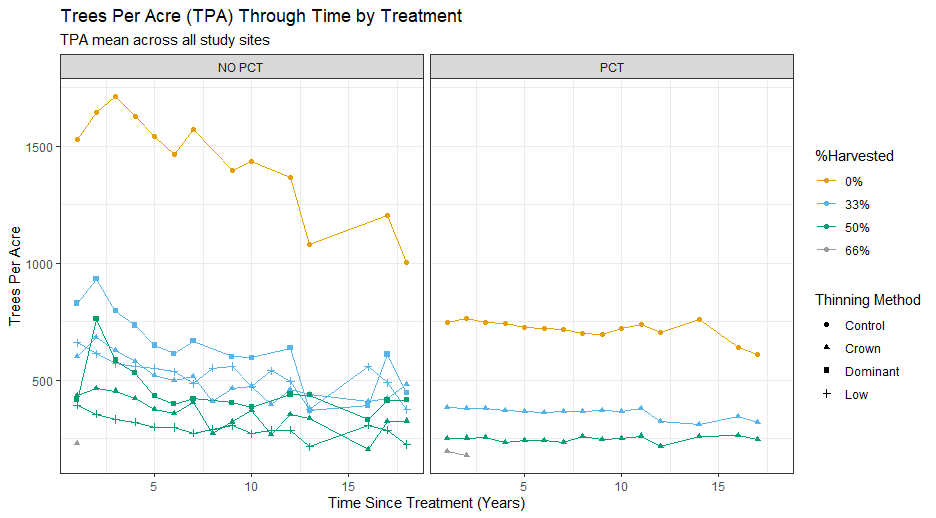Overview:
This project culminated from my Field Technician position with the Cooperative Forest Research Unit (CFRU) and a subsequent Mentorship from Dr. Aaron Weiskettle at the University of Maine, who managed my National Science Foundation REU Research.
I was tasked with managing, updating, and QAQC, for the CTRN dataset, as well as providing goal-targeted summary statistics for the CTRN study. The field season of 2018, which required week-long remote sampling of study sites, was the final measuring season of a 35+ year study on Thinning of the Spruce-Fir forests of Maine. The study was originally intended to determine best practices and management strategies for the densely regenerated forest stands resulting from the Spruce Budworm outbreak of the 1970s. As an on-the-ground recorder of the measurements used in determining these goals, I was uniquely positioned to come up with summary statistics and final cleaning of the database attached to this study.

The study itself was spatially distributed over many different Ecological zones but all fell under the requirements of 90% or greater Red Spruce (Picea Rubins) and or Balsam Fir (Abies Balsamea). The study tested thinning method and proportion across both Precomertially Thinned (PCT) stands and stands having undergone no PCT. Precommertial Thinning is a common silvicultural practice in the softwood dominant forests of the Northern Hemisphere and is widely known to increase profitability and shorten rotation cycles. The primary thinning method and the percentage were meant to capture the landscape of spruce/fir forests that have and have not undergone PCT.
Overall assessment of treatment confirmed prior work, which indicated that "Thin early, thin heavy" provided the best outcomes and was the best strategy.
However, the inter-treatment analysis resulted in widely different Wind Induced Mortality (WIM) rates which drove the question of what site factors were influential in thinning to reduce mortality risk. To see this work, please click the WIM Research button.
Sample Figures:

Study Site Density Managment Diagram

Overall PCT impact

Volume impacts by treatment

Larger tree impacts by treatment

Basla area impacts by treatment




